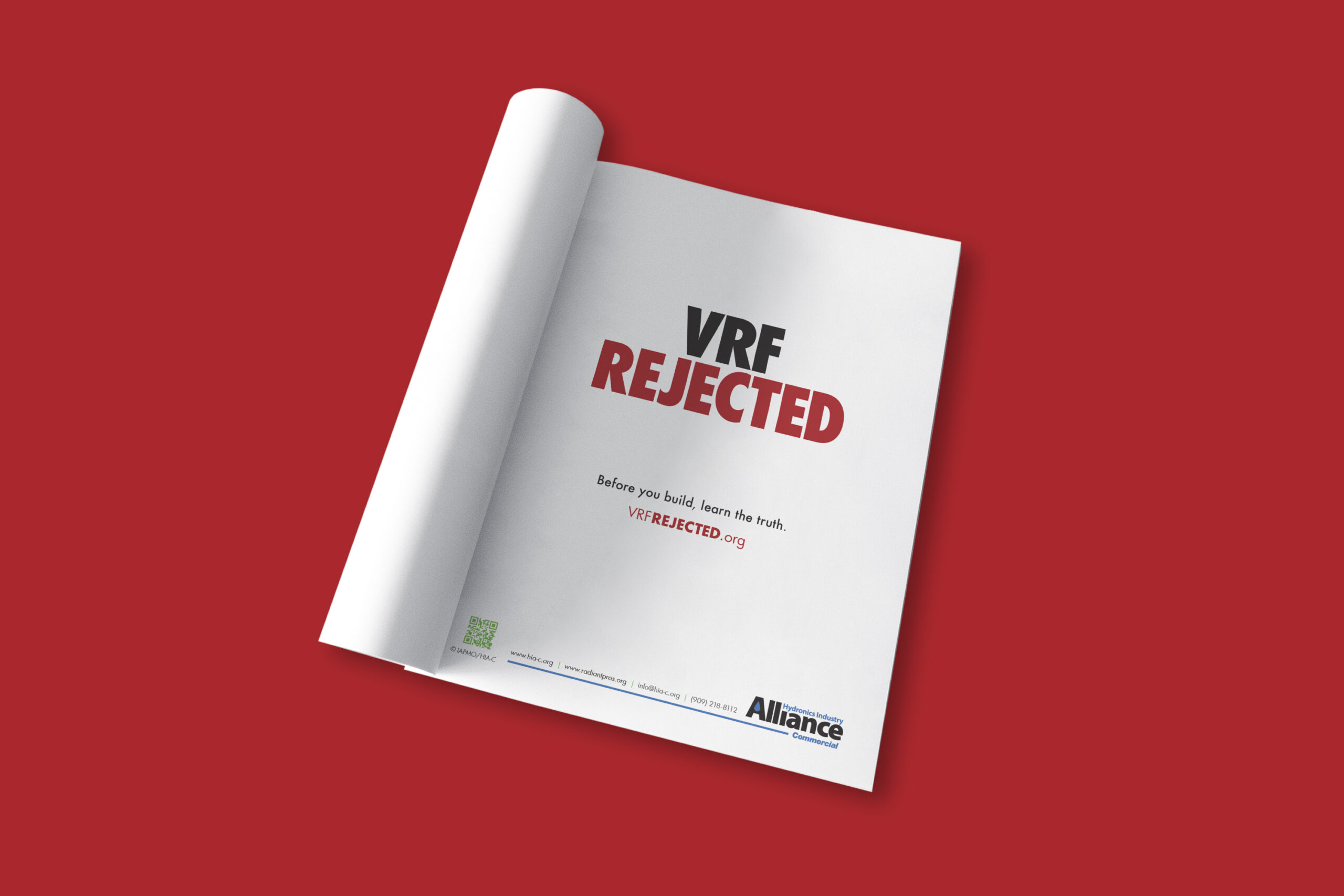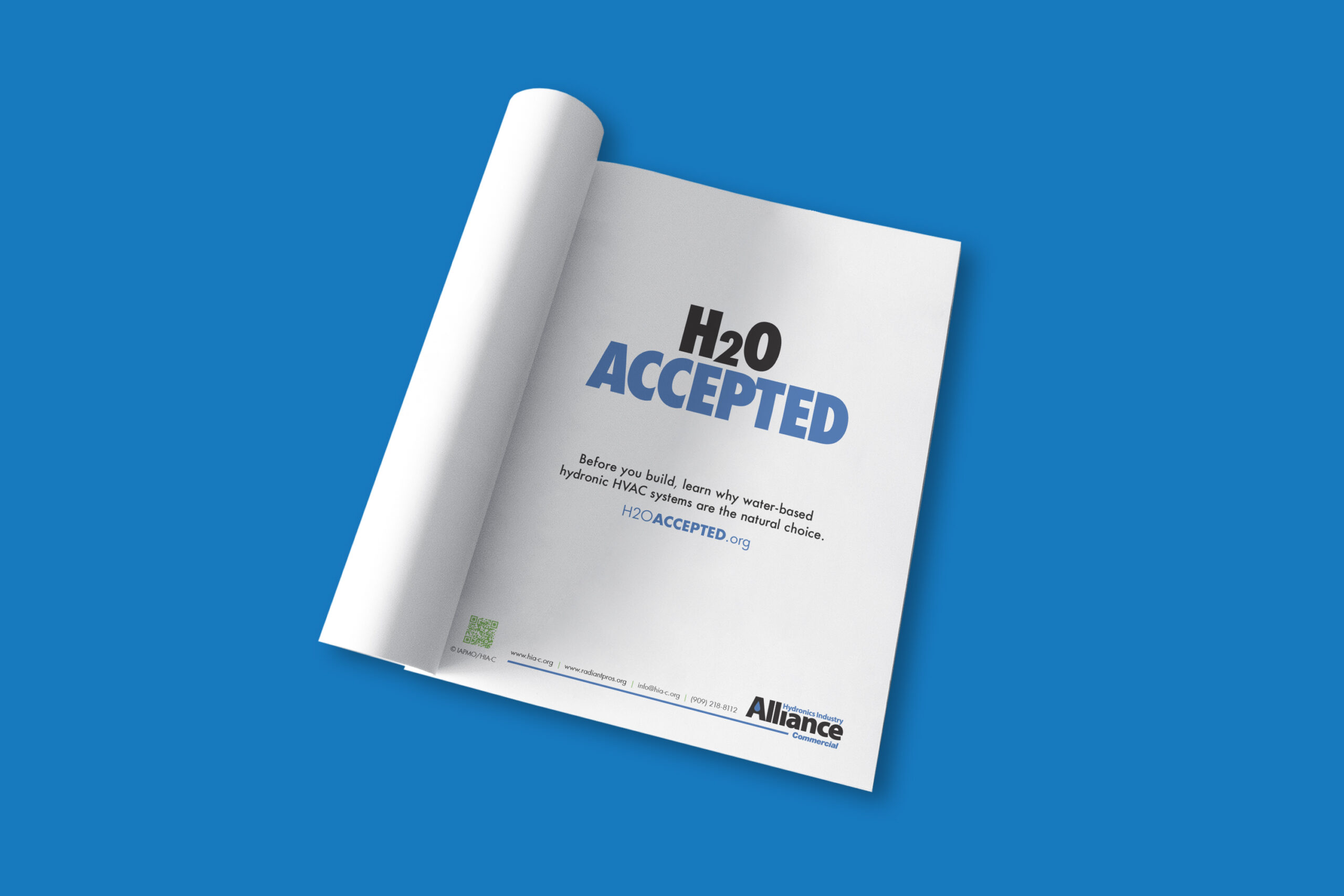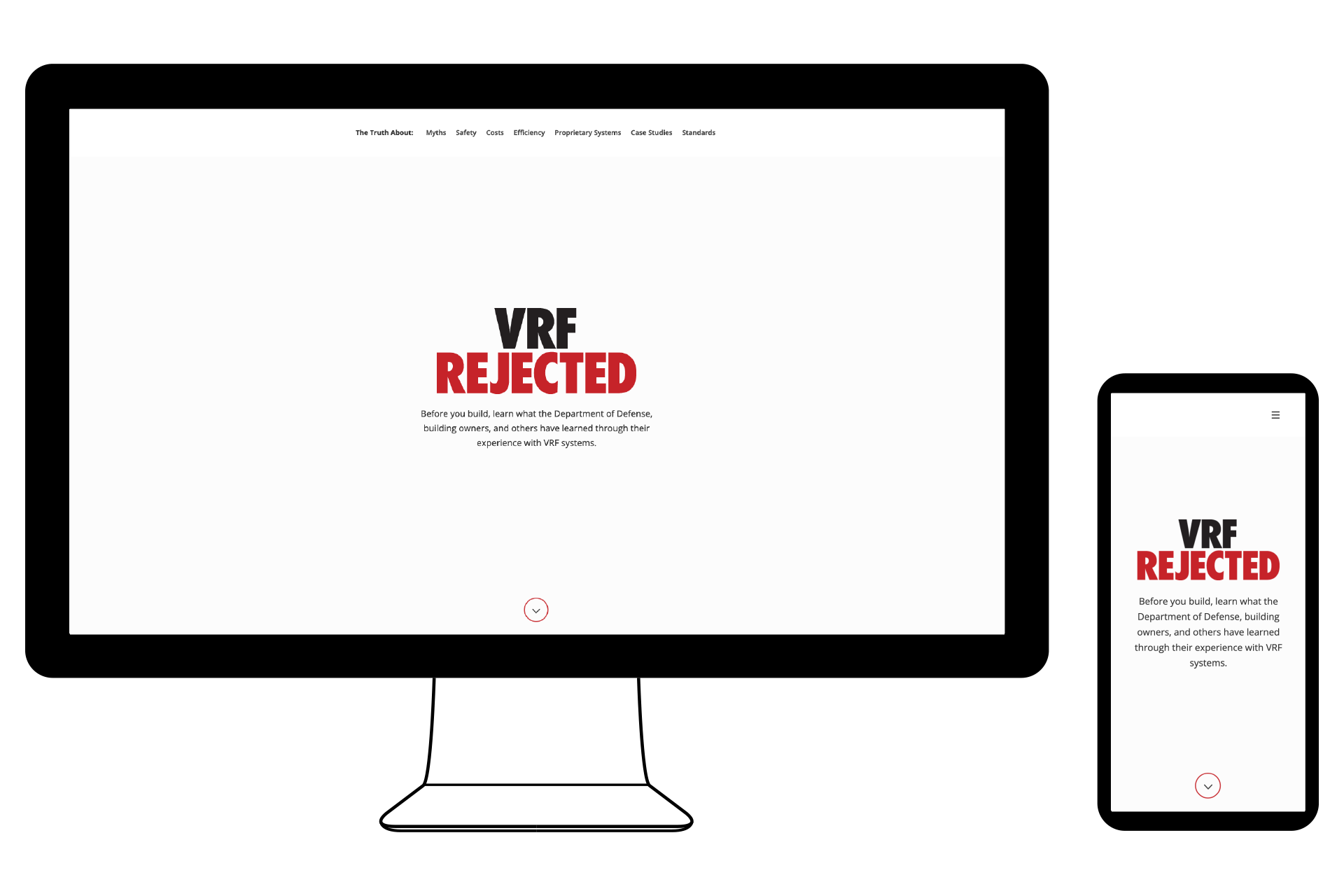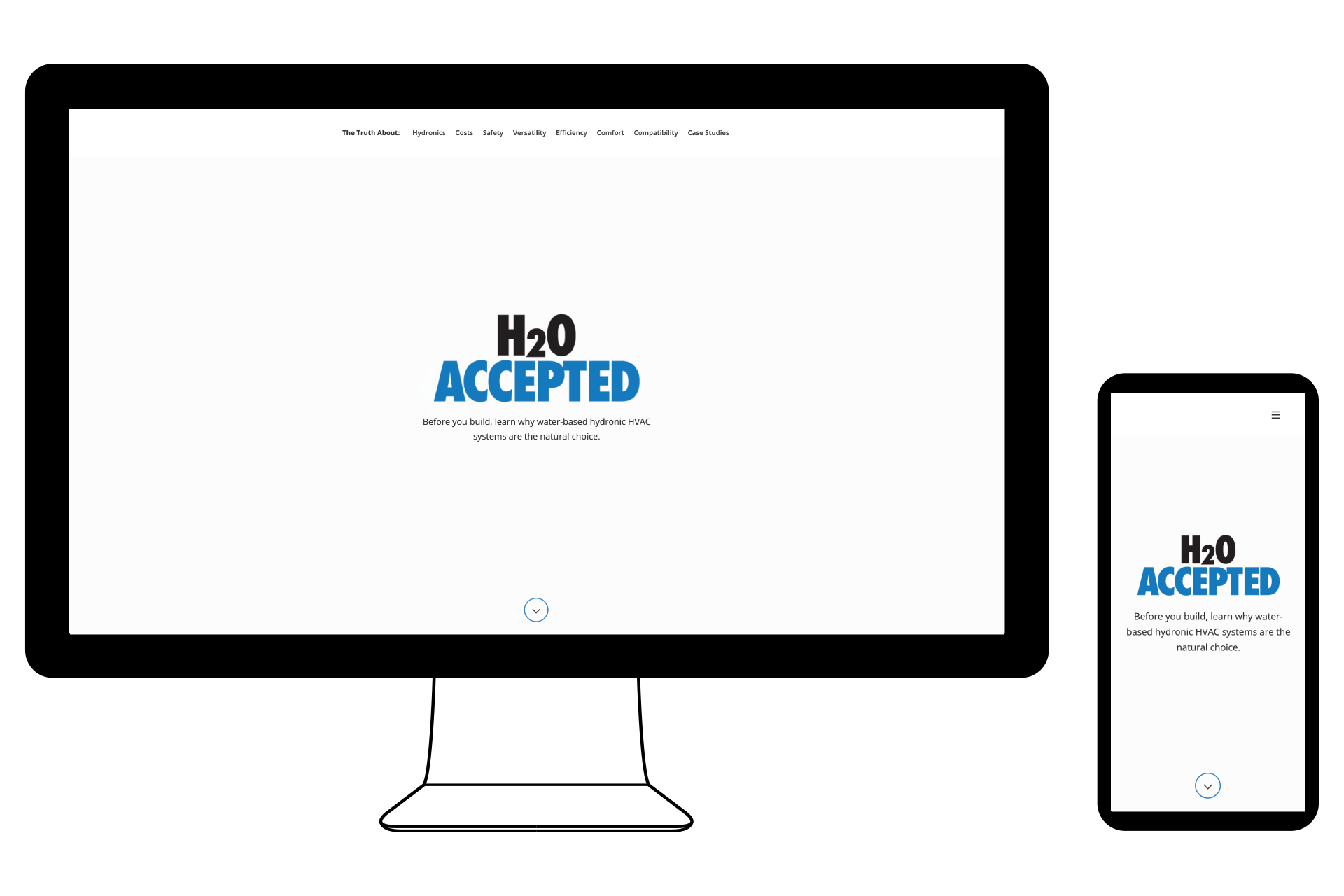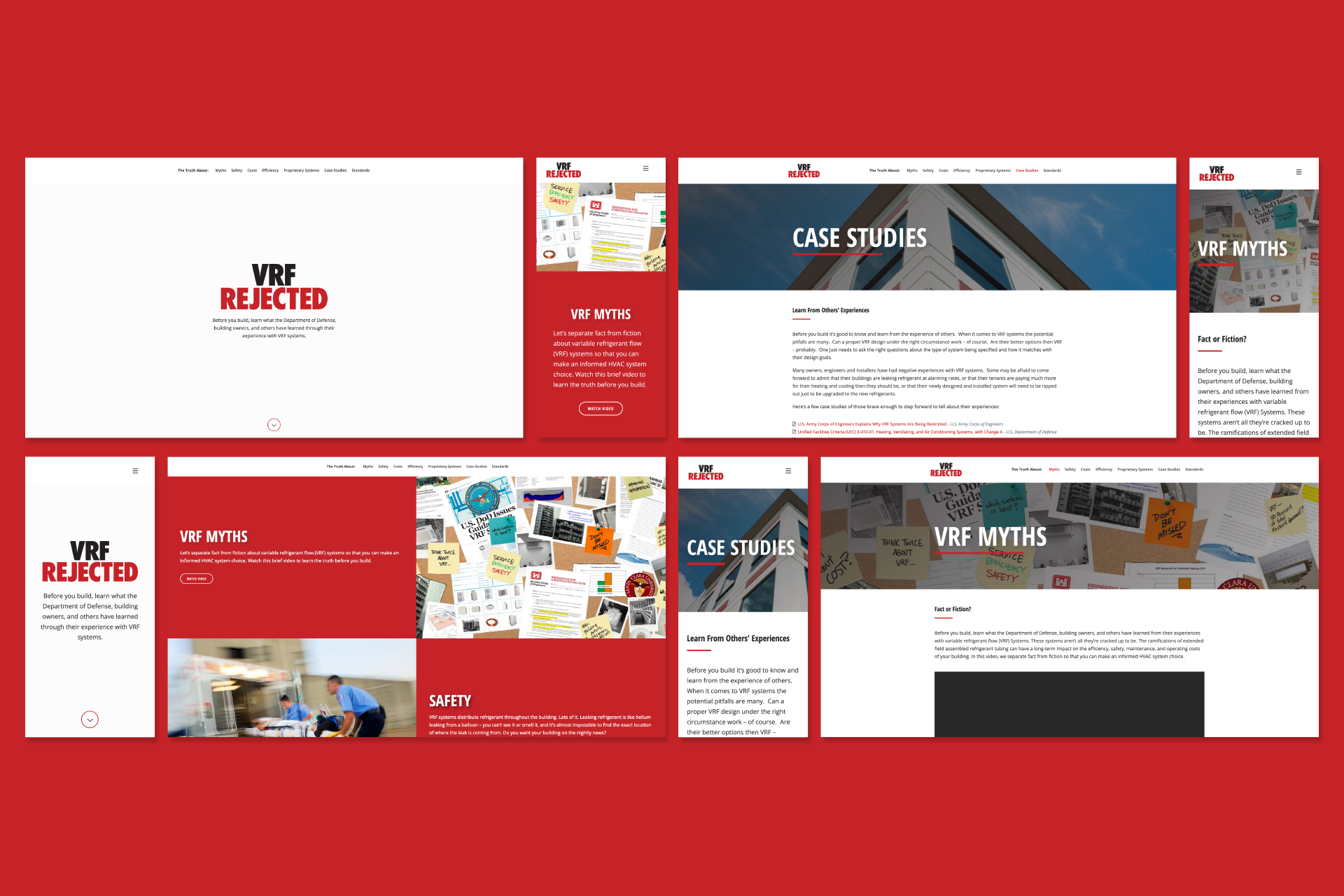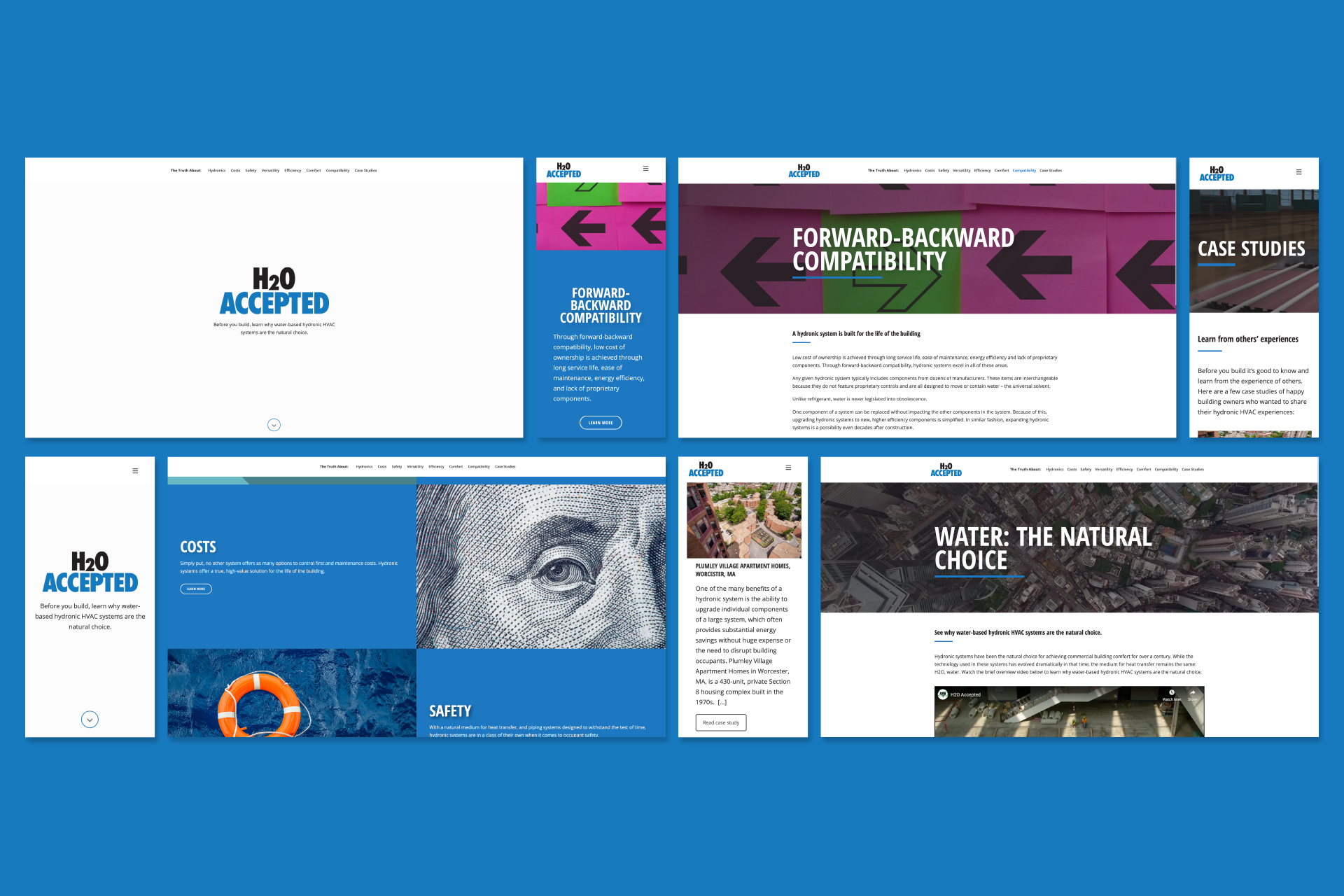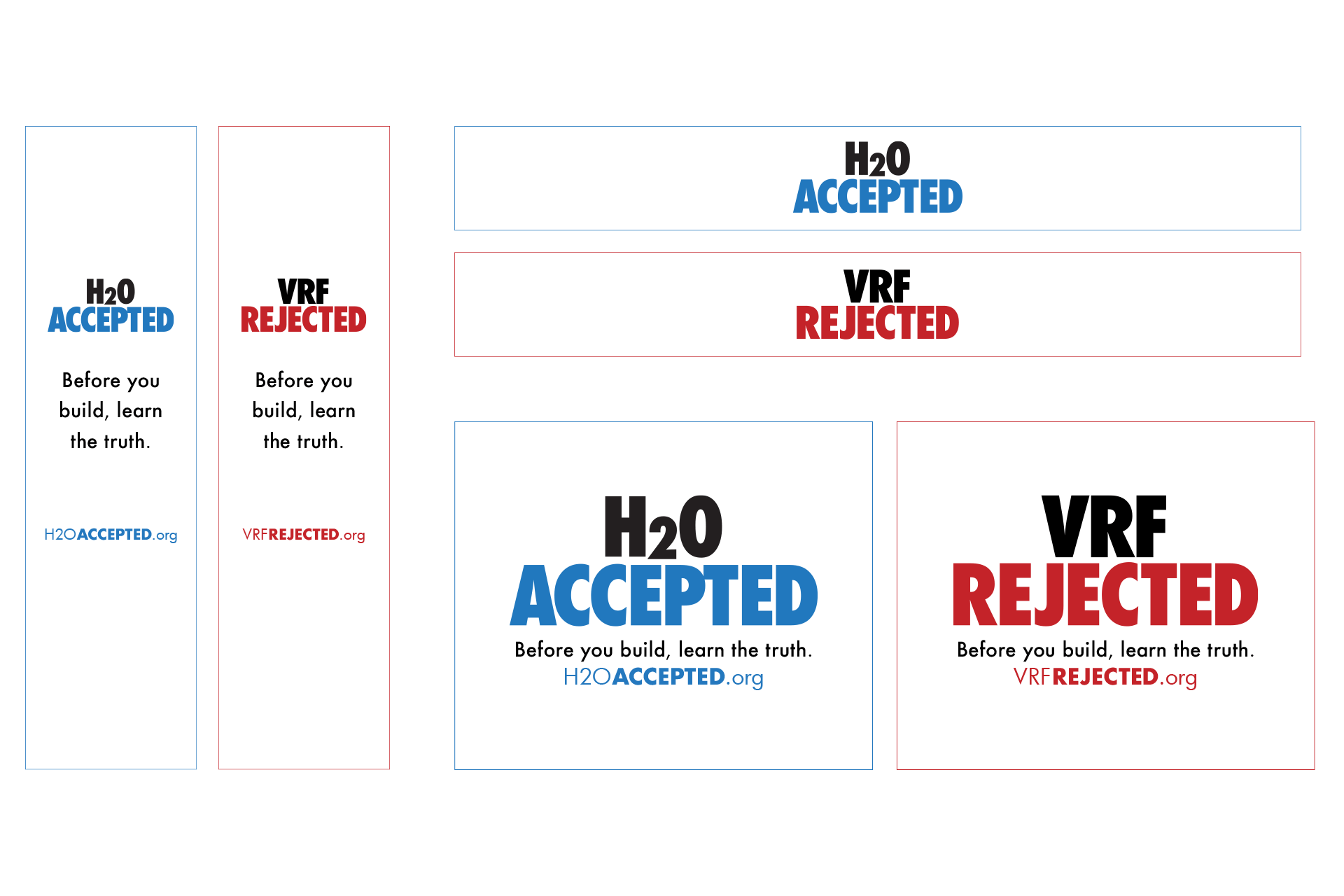LOGO DESIGN, VISUAL IDENTITY, WEB DESIGN
The Hydronics Industry Alliance is a committee of hydronic heating and cooling equipment manufacturers and partners operating in North America. The alliance serves as a resource within the industry to educate, integrate, and communicate the advantages of hydronic system solutions. Their role is akin to that of the California Milk Processor Board, known for the iconic “Got Milk?” campaign. The alliance’s objective is to pool resources from various manufacturers to effectively advertise the merits of hydronic system solutions, especially against their main competitor, variable refrigerant flow (VRF) systems. VRF heating and cooling systems are used in many commercial buildings, ranging from small shops and cafes to large office buildings and hotels. This is a huge market and the hydronic industry is constantly fighting for a piece of it.
“VRF Rejected” Campaign: This campaign, “part 1,” strategically capitalized on the 2017 Department of Defense directive against VRF systems in certain facilities (VRF systems were no longer permitted in U.S. Air Force facilities, and strongly discouraged in Army facilities). The campaign’s message and design was straightforward and impactful, highlighting the rejection of VRF by the DoD. It aimed to inform decision-makers — including building owners, architects, and engineers — about the drawbacks of VRF systems and position hydronic systems as a superior alternative. The campaign was executed through print and digital ads with a straight forward call to action: “VRF Rejected: Before you build, learn the truth.”
“H2O Accepted” Campaign: As a follow-up, the “H2O Accepted” campaign was launched. This positive campaign mirrored the negative “VRF Rejected” campaign in its identity to leverage the recognition already established. It focused on educating decision-makers about the advantages of hydronic systems in terms of simplicity, versatility, efficiency, and comfort. The message was clear and direct: “H2O Accepted: Before you build, learn why water-based hydronic HVAC systems are the natural choice.”
Each of these campaigns directed viewers to respective microsites, which provided further rational and information for the bold statements.
Both campaigns achieved significant traction. The stark, focused messaging of the ads successfully drove thousands of viewers to dedicated microsites, sparking extensive industry discussion and debate. The campaign’s effectiveness was further evidenced by numerous industry seminar invitations to discuss the topic further. This dual-campaign strategy not only elevated the profile of hydronic systems in a competitive market but also demonstrated the power simple design and strategic advertising.
